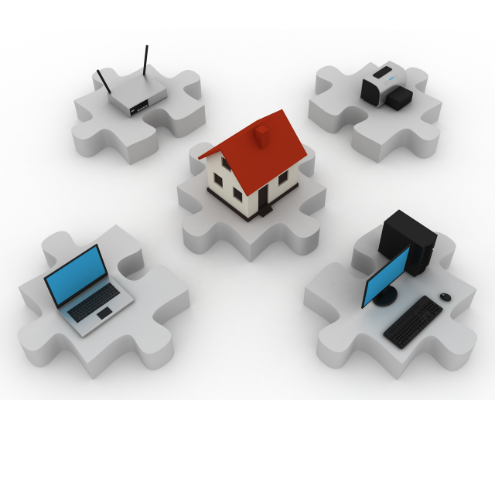Why setup a Home Network
A home network can provide many benefits, including:
- Sharing an internet connection: You can use a home network to share a single internet connection with multiple devices, rather than each device having its own separate connection.
- Sharing files and resources: You can use a home network to share files and other resources, such as printers and hard drives, between devices.
- Connecting devices wirelessly: You can use a home network to connect devices wirelessly, which can be more convenient than having to use cables.
- Increased security: A home network can increase security by allowing you to set up security measures such as firewalls and VPNs to protect your devices and data.
- Improved performance: In some cases, having a home network can improve the performance of your devices, particularly when it comes to streaming video or other types of data-intensive tasks.
Setup a Home Network – Basic Steps
Determine your network needs
Before you start setting up a home network, it’s important to determine your needs and budget. Consider the number of devices you need to connect, the type of internet connection you have, and the type of activities you’ll be using the network for (e.g., streaming video, online gaming, etc.). This will help you choose the right equipment and set up the network in the most cost-effective way.

Choose a router
The router is the central hub of your home network, and it’s responsible for connecting all of your devices to the internet. There are many different routers available, and the one you choose will depend on your budget and needs. If you’re on a tight budget, consider a basic router that supports wireless networking (Wi-Fi) and has a range of at least 100 feet.
Set up the router
Once you’ve chosen a router, it’s time to set it up. Follow the manufacturer’s instructions to connect the router to your modem and configure the network settings. Make sure to change the default password to something more secure to protect your network from unauthorized access.

Connect your devices
Once the router is set up, you can start connecting your devices to the network. Most devices can connect to a Wi-Fi network automatically, but you may need to enter the network’s name (SSID) and password to connect. If you have devices that don’t support Wi-Fi, such as smart TVs or game consoles, you can connect them to the router using an Ethernet cable.
Secure the network
To protect your home network from cyber threats, it’s important to secure it with a strong password and enable any security features offered by your router. Some routers also offer additional security measures such as firewalls and virtual private networking (VPN) support.

Optimize your network
To get the most out of your home network, there are several things you can do to optimize its performance. For example, you can change the channel your router uses to transmit data to avoid interference from other devices. You can also use a tool such as Wi-Fi SweetSpots to help you find the best location for your router.
Expand your network
If you need to connect more devices to your home network than your router can handle, or if you have dead spots where the Wi-Fi signal is weak, you can consider expanding your network. One option is to use a range extender or mesh system to boost the signal and extend the coverage area of your network. Another option is to use a network switch or network-attached storage (NAS) device to add more Ethernet ports to your network.
Check out our blog page for more articles and consider subscribing to our newsletter.
